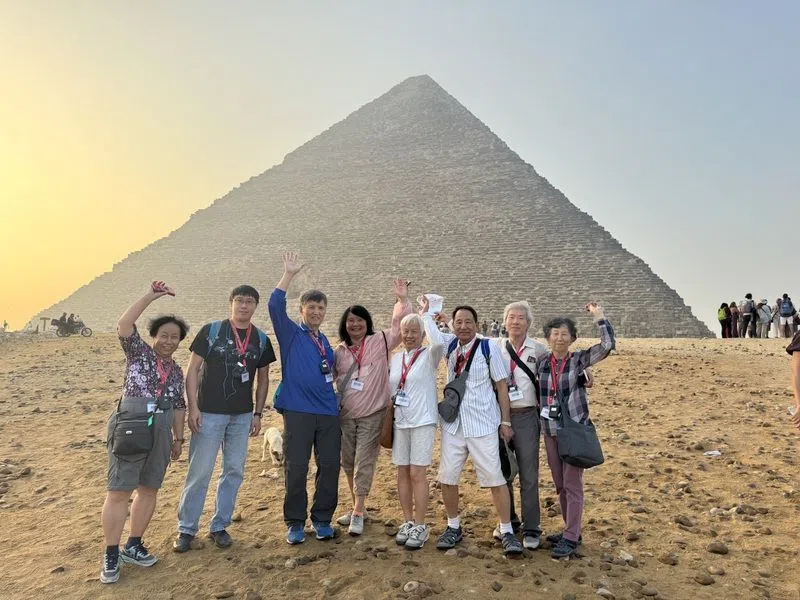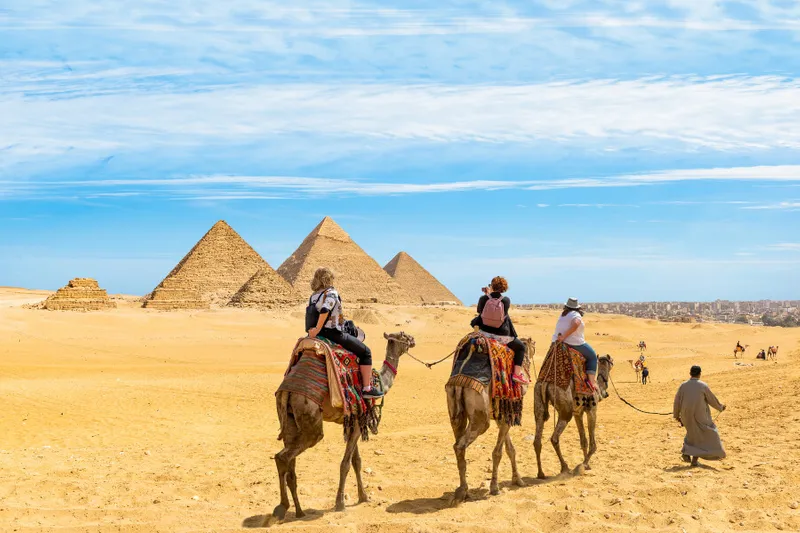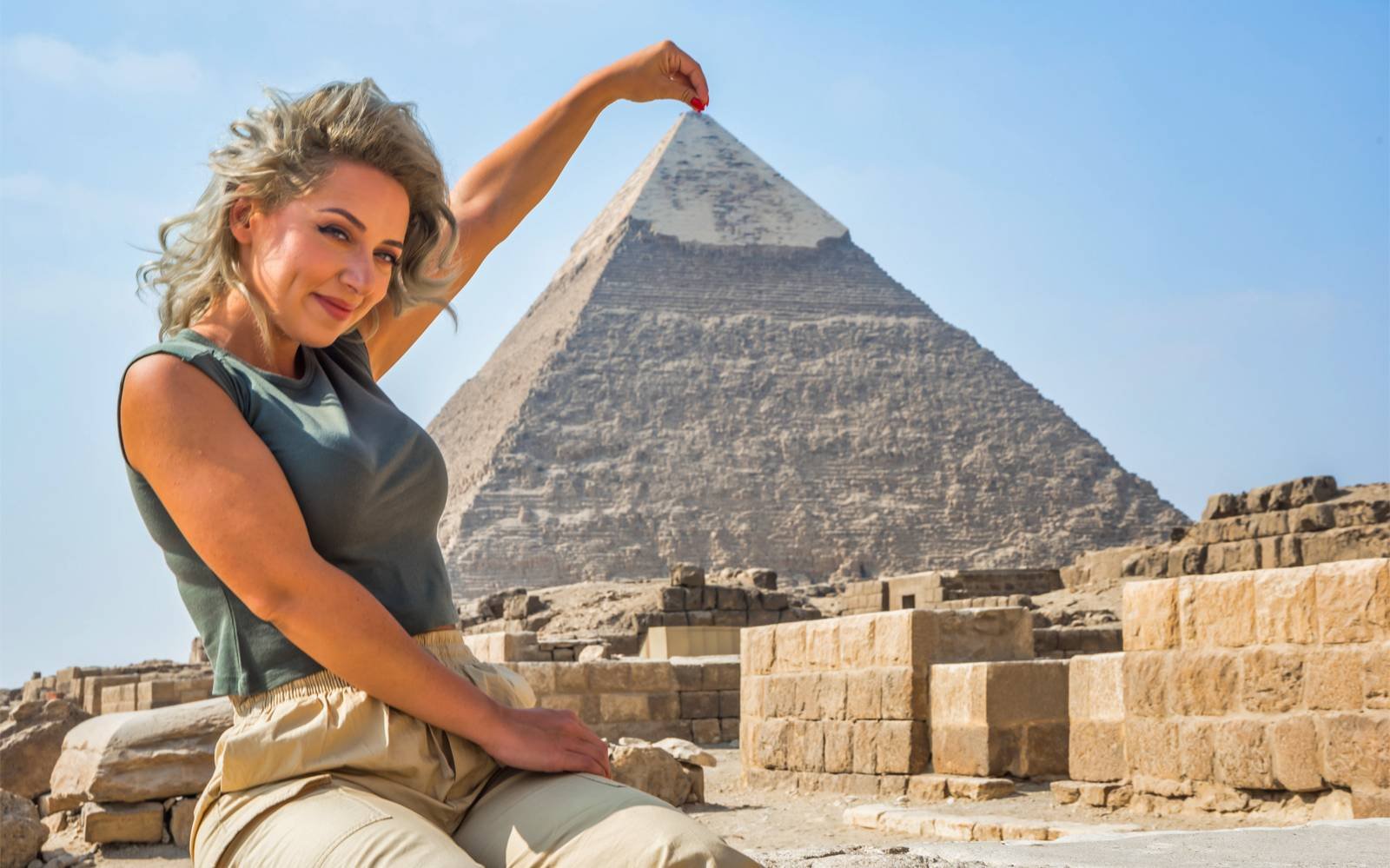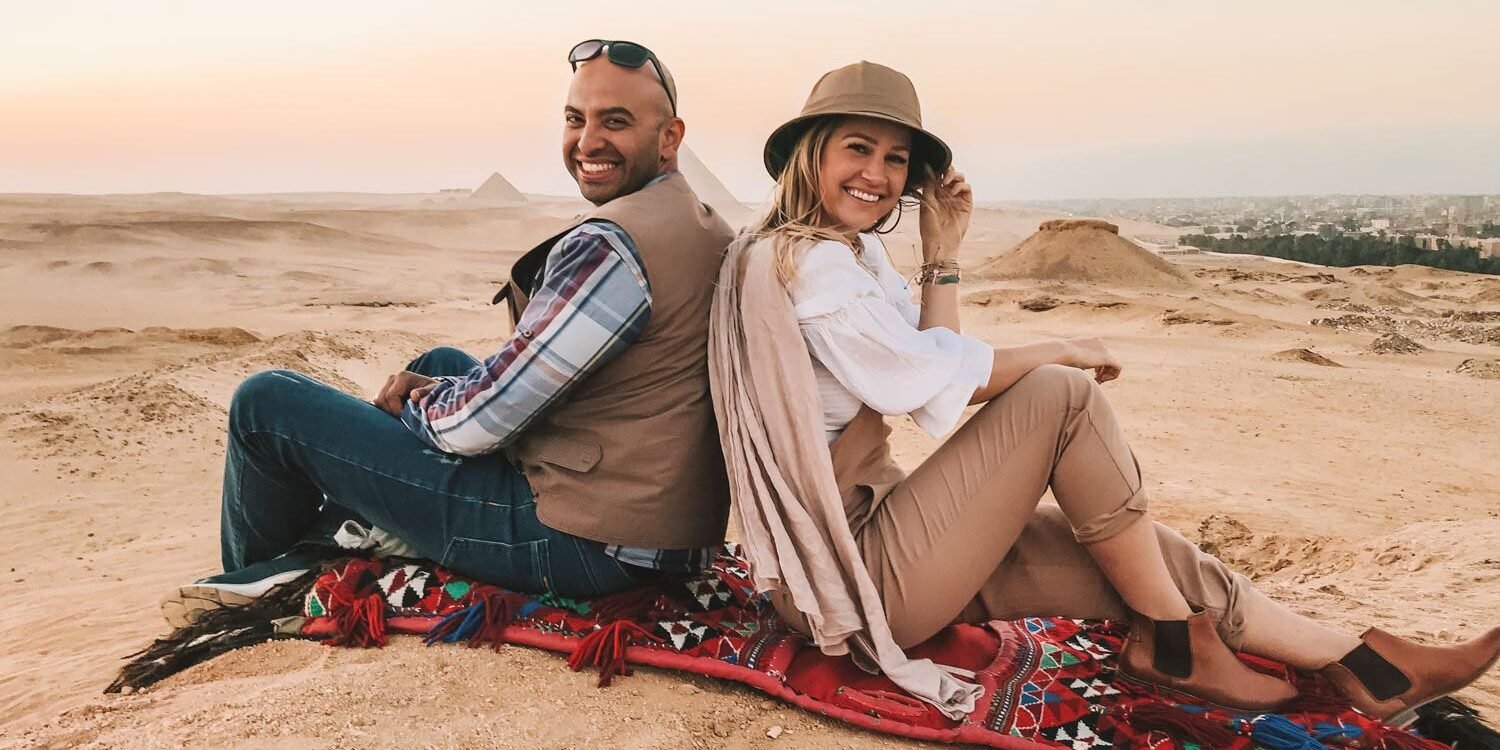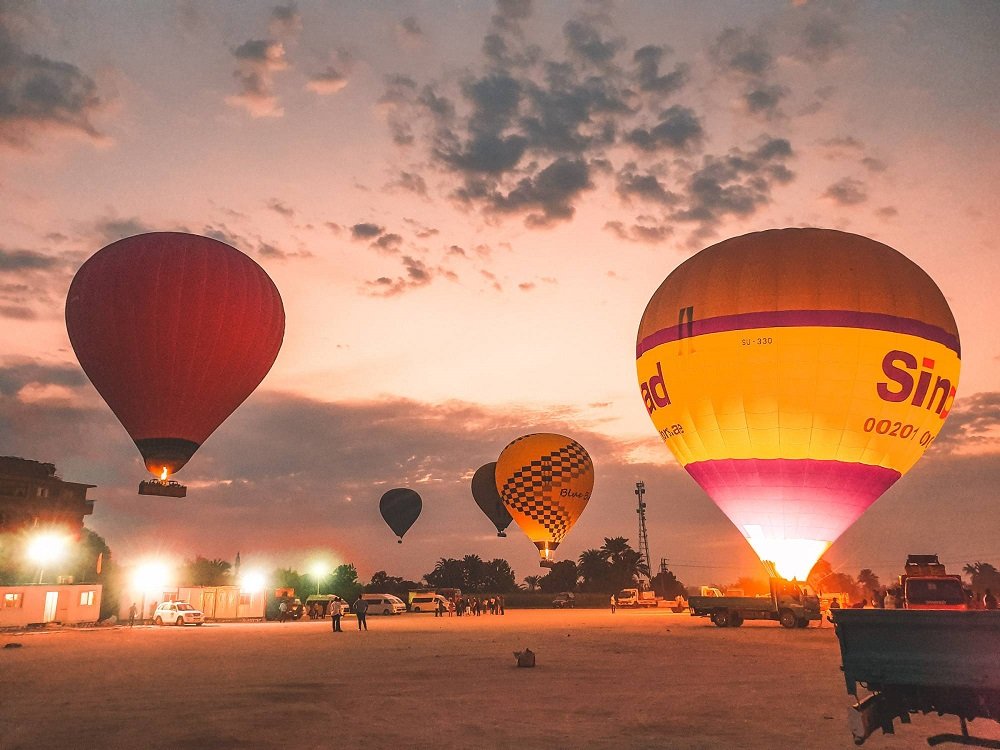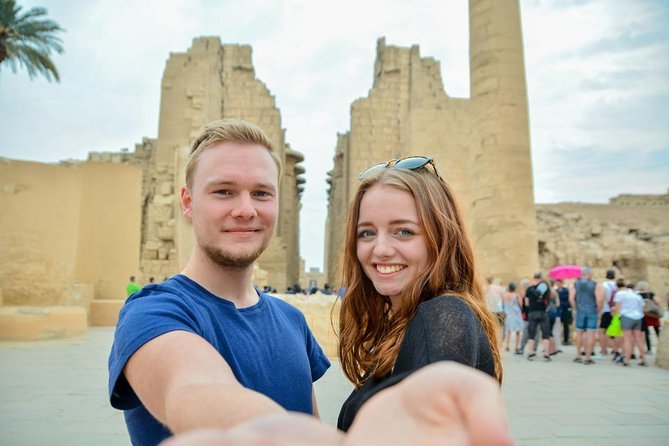8 Day
Upon Request
Any Location you chose
This is the heading
Tour Description
Lorem ipsum dolor sit amet, consectetur adipiscing elit. Ut elit tellus, luctus nec ullamcorper mattis, pulvinar dapibus leo.
Included
- All transfers are by modern, air-conditioned deluxe vehicles.
- Nile Cruise excursions as mentioned in the itinerary.
- visiting to all sights between Luxor and Aswan.
- All service charges and taxes.
Not Included
- Tipping ( tour guides – drivers- hotels & cruise crew )
- Accommodation for 7 nights on board 3 on a Nile cruise on a full board basis, 2 nights in Cairo, and 1 night in Luxor cost 80 to 350 usd per person per night according to your booking choice in advance
- Entrance fees to all sights in Cairo Luxor and Aswan. cost 350 usd per person
- Egyptologist guide during your tour. 60 usd per day for English tour guide extra 40 usd for any other languages
- Personal Expenses.
- Optional Tours. (Abu Simbel, Nubian village, Hot Air Balloon in Luxor)
- NOTE: You can add all the optional tours to your itinerary for only 300 USD instead of the 400 USD “Limited offer.”
- Any extras are not mentioned in the program.
Tour Itinerary
Day 1_arrival to Cairo
Cairo airport

Greetings from Egypt, one of the most magnificent ancient civilizations in history. After arriving in Cairo, make your way to your hotel and enjoy the rest of the day at your leisure. Dinner will be served after your trip's introductory meeting with your tour manager,
During the night: Cairo
Dinner for dinner.
Day 2_pyramids_great sphinx and Cairo museum visits in Cairo
pyramids and great sphinx visits in Cairo

Visit the Giza Pyramids, which were constructed in the third and fourth dynasties of the Old Kingdom, after breakfast. These enormous projects are a magnificent testament to the nearly unfathomable talent and perseverance of their creators. See the Great Pyramid, constructed for the Pharaoh Khufu, up close,
together with the Pyramids of Khafre and Menkaure. See the magnificent Sphinx of Giza, the fabled statue with a human head and a lion's body that was astoundingly carved from a single piece of limestone, not far from the Pyramids.
Next, go to a store where you may watch a brief demonstration of the process used to make papyrus paper from papyrus grass. Examine the assortment of artwork on exhibit. This is leisure time. afternoon, or do the lunch-related optional tour of the Egyptian Museum. Explore the museum, a significant collection of ancient Egyptian artifacts housed in a Neoclassical edifice on Tahrir Square.
Cairo museum + lunch (optional)

Centrally located on the edge of Tahrir Square in Cairo, the Egyptian Museum is hard to miss on any tour of Cairo. Opening in 1902, it was purpose-built to house the antiquities of Ancient Egypt. Inside is the greatest collection of Ancient Egyptian archeological history in the world.
The Egyptian Museum in Cairo houses over 120,000 artifacts, including the contents of Tutankhamun’s tomb and most of the mummies that have been discovered since the 19th century. The museum’s exhibits span from the beginning of the Old Kingdom of Ancient Egypt (approximately 2700 BC) through the Greco-Roman period.
The building consists of two floors. On the ground floor, you can follow the history of Egypt from the Old Kingdom up through the Greco-Roman period by turning left at the entrance and looping around
optional: Lunch and a half-day at the Egyptian Museum (PM)
overnight: Cairo
Breakfast is the meal.
Day 3_ Flight to Aswan, Philae Temple and Aswan high dam then Cruise Embarkation
Aswan airport

Travel to the historic frontier town of Aswan today. Visit the temple of Philae, which honors the goddess Isis. Arrive by motorboat and take in the stunning island setting of the temple.
Philae temple

The dazzling Philae temple of the renowned mother goddess Isis The “Myth of Osiris” is depicted in the enormous storybook Isis, which was crafted from heavenly stone and endured the test of time. It was moved to Agilkia Island between the 1960s and 1970s as part of the UNESCO Nubia Campaign project. King Ptolemy II erected it about 280 BC
Aswan high dam

In the 1960s and 1970s, the magnificent Aswan High Dam was built to have a good effect. on the enormous nation of Egypt’s economy and culture, bringing Egypt into the industrial age.
Make a stop at a nearby perfume store on the way back. You get the opportunity to observe the making of perfumes while there. Choose from an extensive assortment of glass bottle containers after deciding on a fragrance. Later, set sail on your vessel for a once-in-a-lifetime journey down the legendary Nile River.
Spend the afternoon at leisure after lunch on board the ship, or opt to take the optional Aswan Felucca Ride to enjoy a leisurely voyage on a felucca, the classic Egyptian sailboat used along the Nile.
optional Felucca ride in Aswan (PM)
During the night: Travel
Breakfast, Lunch, and Dinner Meals
Day 4_ Kom Ombo, Cruise to Edfu
Spend the morning at leisure, or join the optional visit to Abu Simbel temples. An early morning bus ride from Aswan transports you back in time to the mighty Temples of Abu Simbel, reclaimed from the floodwaters of the Aswan High Dam and totally reconstructed in the present location.
The site is dominated by the looming twin temples of Ramses II and his wife, Queen Nefertari. It is one of the most recognizable ancient sites of Egypt.
Optional: Abu Simbel by Bus (AM)
Abu simple temple (optional tour )

Abu Simbel Temples, south of Aswan along Lake Nasser’s shore, is the most famous in all of Egypt after the Giza Pyramids. Built by the greatest of the pharaohs, Ramesses II, which made it also known as the Temple of Ramses II or Ramesses II,
these huge rock-cut temples marked the southern boundary of the Egyptian Empire with Nubia at the peak of its power during the New Kingdom.
They were meant to convey the power of Egypt’s rulers to anyone who laid eyes upon them. The four statues guarding the doorway to the larger of these temples are the largest sculptures that survive from the ancient Pharaonic era.
Later, tour the imposing Greco-Roman Temple of Kom Ombo, which is dedicated to Horus, the Sky God, and Sobek, the Crocodile God. Admire the fascinating detailed reliefs on the walls
kom ombotemple

The setting of this Temple of Sobek, the crocodile god, makes an approach by water the far superior way to visit this site. The temple is perched atop a picturesque bluff alongside the river and while there are no longer any crocodiles in the river
or in the sacred lake inside the temple complex, this riverside temple is still worthy of a visit.
Like the other two sites between Luxor and Aswan,
Kom Ombo dates from the Ptolemaic Dynasty, and it was only completed under Roman rule. The temple has a dual dedication to Sobek, as well as Horus, and the plan of the temple reflects this dual purpose.
Optional: Abu Simbel by Bus (AM)
Overnight: Cruise
Meals: Breakfast, Lunch, Dinner
Day 5 _ Edfu_luxor temple by night visits , Cruise to Luxor
See the magnificent Temple of Horus at Edfu this morning; it's regarded as one of the best-preserved Egyptian temples. The temple honors Horus, the falcon god and the son of Osiris and Isis. Its enormous size and ostentatious design reflect the wealth of the nation at the time.
This afternoon, the ship departs for Luxor, formerly known as Thebes in ancient Egypt, via Esna Lock.
Edfu temple

The Temple of Horus at Edfu is widely considered to be the most impressive of all of the Nile-side temples along the journey between Luxor and Aswan. It is a required stop by all of the cruise ships that make the trip, also stopping at Esna and Kom Ombo.
Like at Esna, the temple at Edfu is a late construction. It was built during the Greco-Roman Period, but the builders painstakingly preserved the form of Egypt’s true pharaohs. As a result, a visit to Edfu allows you to see what all of the other ruined temples around Egypt might have looked like had they been built 2000 years later.
Luxor temple by night

On the east bank of the Nile River, in the south of Egypt, the World’s Largest Outdoor Museum, Luxor City, contains one of the most beautiful temples standing. The Luxor Temple is a mark of ancient Egyptian civilization, a strikingly graceful monument in the heart of modern Luxor.
Different from other temples in Luxor, the Luxor Temple was not built in adoration for a god or to a god figure of the kings and pharaohs; instead, it was built in dedication to the rejuvenation of kingship. Many kings might have had their crowning at the Temple of Luxor,
whether crowned in reality or conceptually, as in the case of Alexander the Great, who claimed he was crowned at Luxor, although facts appear to indicate that he had never traveled south of Memphis, which is considered the modern city of Cairo.
overnight: Meals on a cruise: breakfast, lunch, and dinner
Day 6 _ Disembarkation, (valley of the kings _Hatsheput _memnoon colosal and Karnak temples
Valley of the Kings

Take a tour of the Luxor West Bank this morning after getting off your cruise ship. See the Colossi of Memnon, the Valley of the Kings, and the Temple of Hatshepsut. Start by paying a visit to Thebes' necropolis, the Valley of the Kings, which is classified by UNESCO, where you can see the tombs of the pharaohs of ancient Egypt.
Start your day with an impressive breakfast meal, and then join our Egyptologist tour guide on a tour to visit the gorgeous Luxor tourist attractions, starting with Its royal burials are located in the West Bank of Luxor, which has 24 terrific royal tombs and, in total, 64 tombs, according to the last discovery in 2008–2014.
It's the final resting place of Egypt's rulers from the 18th to the 20th dynasty; it is home to tombs including those of the great Pharaoh Ramses II and King Tutankhamun. The tombs were well stocked with all the material goods a ruler might need in the next world. Most of the decoration inside the tombs is still well-preserved.
Hatshepsut temple

After that, proceed to the colonnaded Temple of Hatshepsut, which is encircled by cliffs, to gain insight into the life of Queen Hatshepsut, the first and only female ruler of Egypt.
See an example of how alabaster is ground the old-fashioned way when you visit an alabaster factory. Look through the large selection of objects made of alabaster.
Memnon colossal

Finish the tour to the Colossi of Memnon, which has two enormous stone statues of Amenhotep III, the pharaoh.
lunch will be served at one of the best restaurants in Luxor

During the afternoon, have a sightseeing excursion around Luxor's East Bank. Explore the stunning
karnak temple

proceed to the Luxor Temple to see the enormous statues of the legendary pharaoh Ramses II. The Karnak Temple dates back from around 2055 BC to around 100 AD. It was built as a cult temple and was dedicated to the gods Amun, Mut, and Khonsu. Being the largest building for religious purposes ever to be constructed,
the Karnak Temple was known as the “most select of places” by ancient Egyptians. During the New Kingdom, the Karnak Temple Complex was the center of the ancient faith while power was concentrated at Thebes (modern-day Luxor) and its significance is reflected in its enormous size. In addition to its religious significance, it also served as a treasury,
administrative center, and palace for the New Kingdom pharaohs. It is to this day considered the largest temple complex ever constructed anywhere in the world.
Overnight: Luxor
Meals: Breakfast
Day 7 _ Fly back to Cairo
Cairo airport
After lunch, you can either join the optional Coptic Cairo tour or head to the airport for your flight to Cairo, leaving the rest of the day free. One of the oldest Christian groups in the world, the Coptic Christians, originated in this region.

Take a look at the 7th-century Hanging Church located here. Admire the interior and courtyard with its marble pulpit, intricate woodwork screen, and icons. Visit Abu Serga, a Coptic church dating back to the fifth century, and learn about its construction above a cave that is thought to have provided sanctuary to the Holy Family during their flight into Egypt. After that,
take a visit to the Greek Orthodox Church of St. George, which is situated atop the north tower of the former Roman fortification of Babylon. This evening,
Optional: Coptic Cairo with lunch
Overnight: Cairo
Meals: Breakfast, Dinner
Day 8 _ Depart Egypt
Cairo airport

Transfer to the airport for your departure flight. I hope you had a wonderful vacation in Egypt without the extraordinary service of King Tut company
Pricing Policy
- 0 to 5.99 – Free.
- From 6 to 11.99 – 50% of the adult person.
- From 12 – will be treated as an adult and must pay the total price of the tour.
- If your travel package includes airfare, there may be an extra fee for each child accompanying you.
- The child policy applies to children who share rooms with their parents (maximum 2 child sharing the parents’ room under 12 years old)
- Reservations should be made as soon as possible.
- The payment of the total amount must be made at the time of booking confirmation and can be made by credit or debit card (Visa and Mastercard) via Verisign Secured system on our website
We don’t charge a cancellation fee for tours canceled for “force majeure” reasons, such as volcanoes, earthquakes, or other reasons. If the cancellation is due to personal or business reasons and we have already incurred costs on your behalf, these costs will be transferred to you.
- All our packages and tours of Egypt do not include entrance fees to special archaeological sites such as visiting inside the pyramids, the Museum where the Solar Boat is located in the pyramid area, or to enter the Tutankhamun tomb in the Valley of the Kings in Luxor.
- If you wish to visit one or all of these areas, please contact us by email as soon as possible, so that we can make the necessary arrangements.
- Tips are not mandatory. And a form of appreciation for the services provided.
- Whether you offer a tip or not, we thank you for choosing us to help you on your tour, and we hope we have pleased you.
- Read More about Tipping in Egypt
Frequently Asked Questions
To book a tour, you can visit the official website of the tour company or contact them directly through phone or email. Alternatively, you can use online booking platforms or visit a travel agency. Make sure to provide all necessary details such as preferred dates, number of participants, and any specific preferences to ensure a smooth booking process.
We offer tours in a variety of languages, including but not limited to English, Spanish, French, German, Italian, Chinese, Japanese, Russian, and Arabic. If you require a tour in a specific language, please feel free to inquire, and we will do our best to accommodate your needs.
The most widely accepted currency on this tour is the US dollar. While local currencies may also be accepted in certain locations, carrying US dollars as a backup is advisable to ensure smooth transactions throughout the tour.
Yes, we accept payment by credit card.
Tipping is not included in the tour price. It is customary to tip tour guides and other service providers in the tourism industry as a gesture of appreciation for their services.
